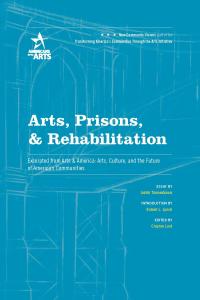
Author: Tannenbaum, Judith
Publication Year: 2015
Media Type:
Summary:
Excerpted from Arts & America: Arts, Culture, and the Future of America’s Communities. This essay looks at changes in the American prison system and the role that the arts may play in positively impacting those changes over the next 10–15 years. The full book of essays can be purchased in Americans for the Arts online store.
Abstract:
This essay looks at changes in the American prison system and the role that the arts may play in positively impacting those changes over the next 10–15 years. In particular, this essay proposes the following trends and associated arts interventions:
- The next 10–15 years will see a continued rise in the number of children who have been impacted by the incarceration of a family member, and the psychological implications of experiencing such trauma threaten to perpetuate cycles of incarceration into a new generation. Innovative arts interventions and partnerships hold the possibility of both easing the trauma of having a parent incarcerated through expressive activity, highlighting the unique issues of children of those incarcerated to a larger audience, and providing an alternative, less destructive path that may help break the cycle.
- Shifts from mass, mostly short-term, incarcerations to fewer, mostly longer-term sentences, including Life without Possibility of Parole, will correspond with a decline in the already minimal interest from the public in interventions that help rehabilitate prisoners who may re-enter society. The importance of prison-based arts programs, of which there are a handful today, will only grow in that new era, as long-term prisoners seek opportunities to maintain humanized, varied lives. Arts-based interventions may be able to increase prisoners’ connection to others, improve psychological health, and enable prisoners to tell their stories.
- As attention and care shifts away from an increasingly permanent prison population serving long or terminal sentences, political and public will to address core issues—who we lock up; the correlation of childhood conditions with future crime; capability of change—will wane. The role of the arts, particularly as vessels through which prisoners can communicate their stories to the world at large, will become paramount.
Arts & Intersections: Prisons & Rehabilitation
Categories: Prisons and Rehabilitation
ADDITIONAL BIBLIOGRAPHICAL INFORMATION
Series Title: Arts & America: Arts, Culture, and the Future of America’s Communities
Edition:
URL:
SBN/ISSN:
Pages: 26
Resources: Document
PUBLISHER INFORMATION
Name: Americans for the Arts
Website URL: https://www.americansforthearts.org